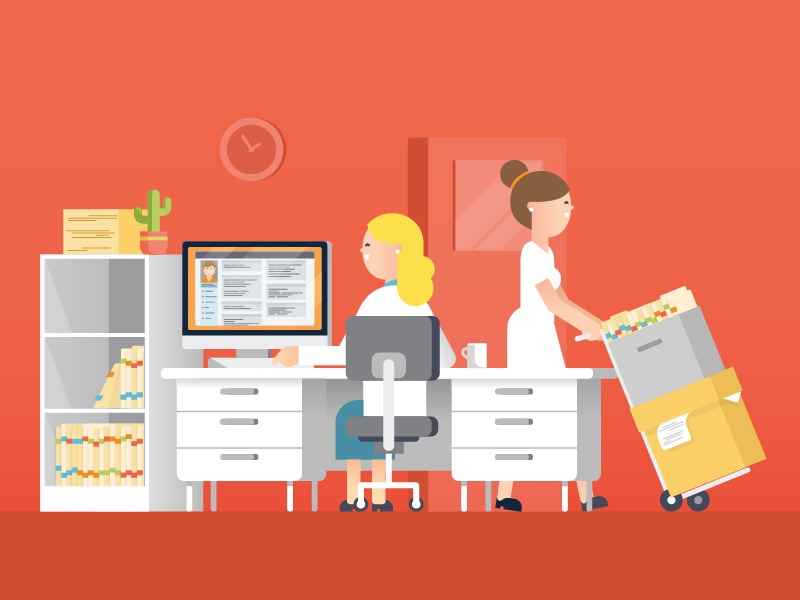10 Tips to Prevent EHR Task Overload
 During a time when patient engagement and improving satisfaction and outcomes is paramount, every practice needs an EHR that will enhance efficiency without creating more headaches. There are strategies physicians can use to maximize time spent with patients without adding more work.
During a time when patient engagement and improving satisfaction and outcomes is paramount, every practice needs an EHR that will enhance efficiency without creating more headaches. There are strategies physicians can use to maximize time spent with patients without adding more work. ![]()
1. Take advantage of your vendor's EHR training. This includes thorough training for all staff members who use the EHR. Valuable time and productivity are wasted when staff members can’t locate information quickly or perform common tasks with ease and efficiency. Work with your vendor to provide role-based training that addresses the unique needs of your practice and patient population.
2. Delegate initial lab reviews. Ask medical assistants to perform first-level reviews of electronic lab results and highlight important information that requires a physician’s attention. This information can then be flagged so it rises to the top of your inbox.
3. Use patient portals. Engage patients with portal technology to reduce the volume of phone traffic. More specifically, patients can use portals to access lab results, schedule appointments, pay bills, request refills, and message physicians directly. In some practices, office staff members review and respond to patient messages, and they only escalate messages that require a physician’s attention. Many physicians find that it’s more efficient to respond to questions after hours or during a discrete period of time during the workday. Set the expectation that messages will be returned within 24-48 hours.
Educate patients about portal etiquette so they understand what questions are and aren’t appropriate for the portal. For example, it’s appropriate to ask a physician to clarify a lab value. However, asking a physician to render a diagnosis based on symptoms is inappropriate because this type of question requires a clinical visit.
4. Take advantage of templates and shortcuts. “Templates help drive the visit and walk physicians through conditions they don’t see regularly,” says Bock.
Shortcuts allow physicians to use standard language for certain repetitive types of advice (e.g., elevate and ice the injury). “This has really streamlined our practice’s flow,” he adds.
5. Consider copy-and-paste functionality. When used appropriately (i.e., with validation of data), practices save a considerable amount of time using this functionality.
“I love this feature,” says Bock. “In a repetitive business like physical medicine, we see patients for a series of sessions on one particular condition, such as lower back pain. It saves us a tremendous amount of time.”
4. Automate preventive maintenance reminders. Send automated messages directly to patients prompting them to set up appointments through the portal. This process helps address care gaps for mammograms, annual visits/check-ups, and other preventive services. It also removes any related tasks (e.g., patient reminders) from your work queue.
5. Go mobile at the point of care. Use your EHR on a tablet or other mobile device that provides the ability to perform data entry with finger taps rather than using a mouse or keyboard. Many physicians using mobile EHRs also enter data during the patient encounter when they have the opportunity to clarify information. Mobile EHRs also allow physicians to maximize their time even when not interacting directly with patients. For example, physicians can sign off on lab results or refill scripts while walking between exam rooms. Otherwise, this time is wasted, and physicians must return to their computers to manage the work.
6. Mitigate alert fatigue. EHRs have a powerful ability to provide informative alerts at the point of care to help physicians make clinical decisions and enhance patient safety. However, if every alert in the EHR looks and feels the same, physicians begin to ignore them over time. Severe medication interactions and allergies, for example, are critical alerts that every physician should see and take the time to address. However, not every alert in the EHR should necessarily interrupt a physician’s workflow. Instead, these alerts (e.g., prescription information, documentation prompts, and mild medication interactions) can appear on the side of the screen for easy reference. Ask your vendor how it can help maximize the efficacy of these alerts and cater to the needs of the practice.
10. Seek administrative support (e.g., a medical assistant). “If you don’t have administrative support to help capture the data points necessary to document procedures or patient conversations, then yes, the EMR implementation can be a very painful process,” says Bock. “But many clinicians had this type of support in a paper world, so it’s really no different in an electronic environment.”
For more tips on how to effectively implement your EHR to get the most of our it, download this helpful guide.




















